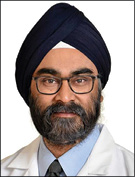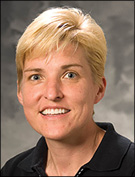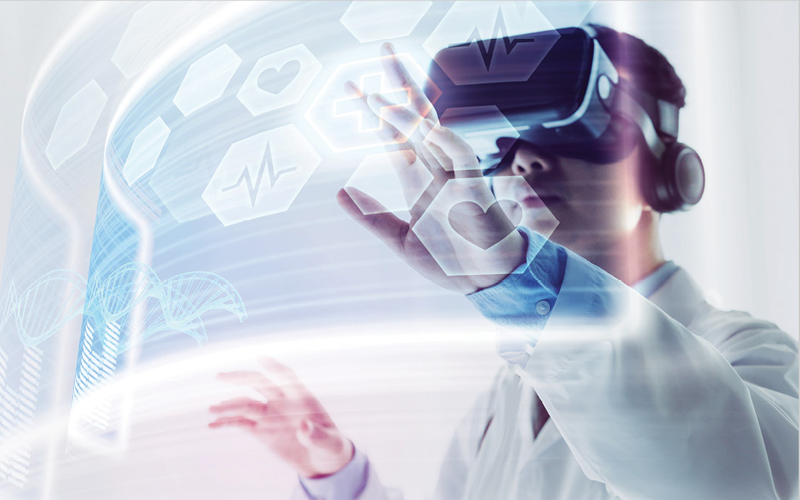Simulation, Virtual Reality are the Future of Radiology Education
Advancing technology continues to move the needle in the radiology classroom



As health care continues to evolve at a rapid pace, radiology must keep up — or stay ahead of the curve — in many areas, including education. But is the specialty doing enough to prepare medical students for the future of radiology?
The answer, according to Harprit Bedi, MD, a neuroradiologist and associate professor and of radiology at the Boston University School of Medicine, rests with radiology’s willingness to adopt the technology that is already revolutionizing health care education.
“So much of residency is about memorizing for exams, but with technology, there’s less of a need to remember – you can just Google it,” said Dr. Bedi, who has published and lectured on incorporating technology in residency training programs. “How does that focus on recall help radiologists take better care of patients? I’m not sure that it does.”
According to Dr. Bedi, who is presenting sessions on technology-driven education at RSNA 2019 (see call-out box below), achieving excellence in radiology requires two core skills. First, students must be able to perceive the abnormality and interpret what they see. But this is only the first step.
“Students also need critical thinking, or the confidence to analyze and synthesize everything they know and be able to communicate this as an evidence-based management plan,” he said. “This is the key to providing excellence in patient care, and this is what our teaching should work toward.”
Luckily, technology, and in particular, simulation and virtual reality (VR), is moving radiology education in that direction.
Connecting the Dots with Simulation
Simulation comprises a wide variety of computer-based and model-based programs and exercises designed specifically to standardize the education of medical students.
Simulation is also a great way to teach critical thinking and prepare residents to be independent readers, according to researcher Lonie Salkowski, MD, a professor of radiology at the University of Wisconsin – Madison School of Medicine and Public Health.
“The technique allows putting a learner in a situation they are not familiar with and test how they apply their knowledge to near real-world situations,” Dr. Salkowski said. “It’s a very effective method for testing preparedness and building confidence without risking patient care.”
Dr. Salkowski’s interest in simulation began while teaching radiology and anatomy classes. “In these classes, I noticed that students tended to understand anatomy in dissection and when presented with medical images, but that they struggled to put the two together,” she said.
She delved into that issue in her research project, “Investigation of Radiology-based Three-dimensional Simulation to Explore Attributes of Novice and Expert Learners in their Process of Correlating and Sense-making of Medical Images with the Human Body,” funded by a 2018 RSNA Education Scholar Grant.
To develop instructional clinical scenarios, Dr. Salkowski created an integrated imaging and 3D simulation device that combines the physical resemblance of a body with abdominal CT scans. Students viewed the anatomical CT slices and were then asked to localize the position of anatomy seen on the CT images on the physical surface of the body.
This exercise highlighted the struggle many students experience when transferring knowledge from one domain to another, Dr. Salkowski said. “However, students have the foundational knowledge that we as educators can use to help them make this integration,” she said. “This is a critical thinking skill that our curriculum needs to work on, and one that simulation is well-positioned to help with.”
An Immersive Learning Experience
Simulation can be enhanced using virtual reality (VR) and augmented reality (AR), according to one expert who is using the technology in his classroom.
“Today, residents come in, rotate, and at some point, are put into the room with a patient and are expected to perform image guided procedures at an advanced level,” said Raul Uppot, MD, an interventional radiologist at Massachusetts General Hospital and an assistant professor of radiology at Harvard Medical School, Boston. “With technology like virtual reality, we can build a student’s confidence and move toward mastery by providing a ‘hands-on’ experience without involving a patient.”
Dr. Uppot began exploring how to apply different technologies coming out of the gaming and entertainment industry to radiology education. He found that VR systems were particularly well suited for teaching because they involve total immersion.

Using head-mounted 360-degree cameras, Dr. Uppot and colleagues began recording their radiology environment – from the equipment around the rooms to the actual procedures.
“Wearing VR headsets, trainees are instantly immersed in the IR room, where they can look around and see not only the procedure but also the equipment, the nurse, the technologist – everything and everyone,” Dr. Uppot said.
Because it is not financially practical to purchase high-end, commercially available VR headsets for every student, Dr. Uppot developed a more affordable method for bringing this immersive experience into the classroom.
Students need only to download an app onto their smartphones to access a prerecorded video of the interventional radiology room. They then clip a plastic stereoscopic device directly to their smartphone, which creates a stereoscopic view.
Innovations like this represent the future of radiology education, he said. “With the right technology, we can move beyond rote learning and achieve meaningful learning, which is an essential building block of critical thinking,” Dr. Uppot said.
Dr. Bedi echoes that sentiment. “As we see with virtual reality and other immersive devices, the technology is out there, we just need to master how to best leverage it to help us achieve excellence,” he said.
Innovative Technology in Education Featured at RSNA 2019
- Augmented and Virtual Reality – Justin Sutherland, PhD, Eliot Siegel, MD
- 3D Printing Applications in Education – Summer J. Decker, PhD
- Video-Based Learning:Effectiveness of a Hybrid Model – Nelly Tan, MD
- State of Radiology Education: Opportunities for Change – Soonmee Cha, MD
- Incorporating the iPad in Resident Education: Using Mobile Technology to Improve the Way We Teach – Harprit Bedi, MD
- Register for these and all RSNA 2019 courses at Meeting.RSNA.org
Learning the Basics of Diagnosis Live™
Along with a full array of Diagnosis Live™ case-based competition sessions, RSNA 2019 will feature sessions on the basics of using RSNA’s web-based audience response system (ARS) for educating residents:
Register for all Diagnosis Live courses at Meeting.RSNA.org.